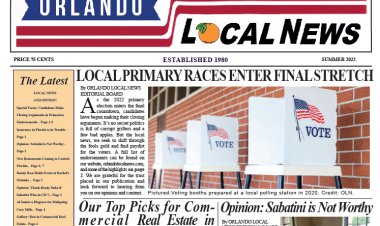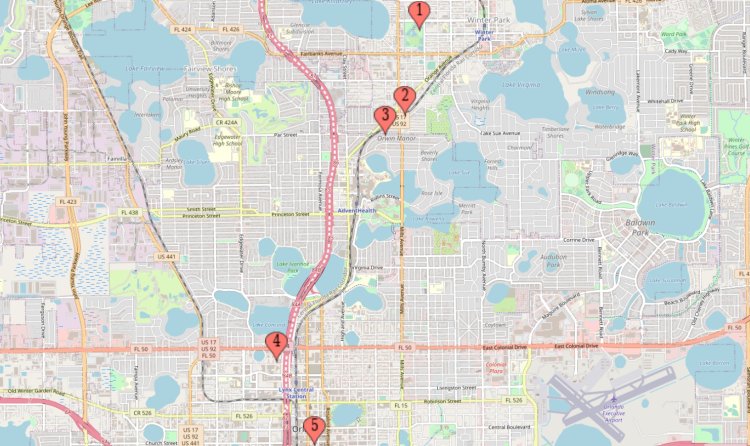Former US Rep. John Mica Discusses Infrastructure Developments in Central Florida and His Legacy
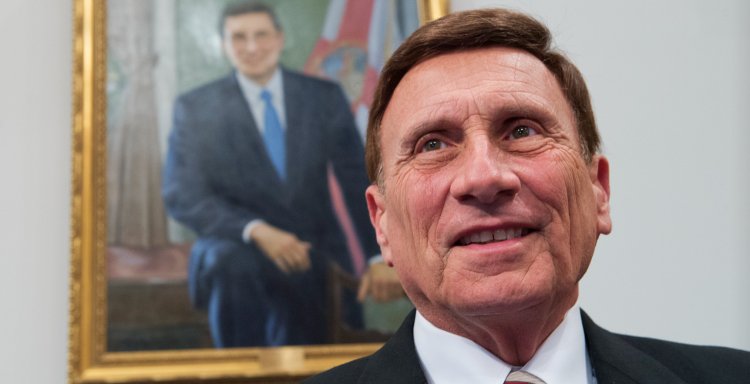
For most Orlando area Floridians, construction has remained synonymous with their I-4 commutes for the past several years. Although the I-4 Ultimate project may be coming to a close throughout the downtown and central corridor, five more phases may still be in the works. Editor Marshall Swanson-Polston recently interviewed former Transportation and Infrastructure Chairman Congressman John L. Mica regarding the project's new developments. Other topics include rail and airport expansion.
*************
SWANSON-POLSTON: Good morning Mr. Mica, thank you for meeting with me today.
MICA: Good to be with you, Marshall.
SWANSON-POLSTON: Tell our readers, if you could, a little bit about your history in relation to Central Florida's transportation and infrastructure development.
MICA: I was elected in 1992, but even before I took office I held several meetings in regards to infrastructure. In December of '92 I held a meeting on doing a commuter rail project at the Lynx headquarters. I had a totally different plan at that time, it was a much more limited plan to provide some demonstration service. I started on that early on but you can't look at Central Florida without looking at all transportation modes, I-4 being the biggest one, the most dangerous stretch of interstate in the United States. Its construction was for a different time, and we knew that needed to be updated. The airport has always been a priority for me.
SWANSON-POLSTON: What was your earliest project legislatively?
MICA: My first efforts legislatively preceded my time in Congress when I was in the Florida Legislature. We funded the interchange going into the airport by the old terminal, located near the B-52 memorial. At that time there were 8 million passengers. We had just expanded two wings of concourses. They came to me and said "we want to build a new terminal one mile to the south." I said, "great!" But then they explained there was no way to get there. I helped fund the appropriations for that new road and got derided for it. They called it "Mica's overpass to the cow pasture." Because there was nothing but a cow pasture.
SWANSON-POLSTON: Well, you certainly had the last laugh on that with new terminals ultimately being constructed. How many people did the new terminal service after it was finished?
MICA: The new terminal was built for 24 million. We were only servicing 8 million, as I said, in 78. My history goes back before Congress. My next project when I was elected to the House of Representatives in '93 was improving the conditions at the former Sanford Naval airfield which is the Sanford Airport. Now 6,000 people have jobs because of that project.
SWANSON-POLSTON: What would you say is your most difficult project?
MICA: I-4 was a sticky one because I've always opposed tolls on the interstate. There has never been enough money to provide additional capacity to I-4. You could do some repairs but gas tax revenues are diminishing so that was a challenge; but I knew we needed to expand I-4. I finally became elected as Chairman of the Transportation and Infrastructure committee.
But to solve Orlando's problems I also needed to solve the country's problems. The reason I opposed tolls is because people already paid for them once.
My solution was this, and it was rather clever I must say: you could allow states or entities to use tolling but you couldn't toll the existing lanes. You could take the inside median, the right of way, the shoulders to bond out the project and expand. What's interesting about I-4 now is that there is still more than a decade of work to be done. The first phase is from Sand Lake to 434. There are five more phases to the project. This twenty miles was 2.4 billion dollars. We had about a billion dollars from existing funds but we couldn't have expanded. So by using the extra space, they were able to add new lanes and toll them, while leaving the existing lanes that were free before, to continue to be free in the future. Any lanes that were free before had to be free after, that was my stipulation.
SWANSON-POLSTON: It really is remarkable to think this section of road is only part one of several. What's happening with the other five phases?
MICA: Let me tell you about the next five phases that nobody knows are coming. If you go down by Sand Lake there are three phases that have to be done. One is from Sand Lake to 528. Then from 528 to 192. Then 192 to 27. So what you're looking at now is only the beginning. A little bit of the 528/192 are under way, and that's because I chose the priority of going south instead of going north. But there will be two more phases in the north from 434 to the St. John's bridge. The other is from the bridge to 472. So again, what you're seeing now is just the beginning of the reconstruction.
SWANSON-POLSTON: Why pick the southern portions as priority instead of the northern area?
MICA: I made the decision to do the two sections to the south first even though I represented the north, and I'll tell you why and how. We started just as I was leaving office to speed up the design and the planning and the acquisition of property. There's quite a bit of media so it won't be as expensive as downtown. I chose the two southern additional phases because when we open up the new I-4 all that will feed into the busiest sections near the tourist areas. I needed to get the busiest sections done first.
SWANSON-POLSTON: Tell us about the last two phases.
MICA: On the north side, the section from 434 to the bridge...
SWANSON-POLSTON: The St. John's bridge?
MICA: Yes, that's the bridge, which I did as well. That was an earmark on the end of a civil service bill I authored. We used an advanced funding method to get that with no toll.
The plan for this portion of the Ultimate Project along the bridge/434 section is to take the shoulders and harden them with no toll. But eventually they'll have to expand the toll up to Volusia.
SWANSON-POLSTON: But again, the toll you're talking about is not going to disturb the existing lanes.
MICA: No, I passed that law for the whole country. Last time I checked there were about forty projects across the country like this where they were keeping the free lanes free but expanding capacity by using the right of way. One of the things that's interesting is that the Democrats are looking to take out the Mica provision which prohibits tolls on existing interstate. They're looking at doing away with it. I thought it was fair because the interstate was already paid for. Why should you pay for it twice? That's what we have on I-4.
SWANSON-POLSTON: What's the difference between the other toll roads and I-4?
MICA: There's a major difference between I-4 and the other toll roads. The rest of them, the money comes in and they sink it back into the project. Then the tolls never end. In my project, at least initially, and they could change it, they take the money and bond it out, but when the bonds were paid off you couldn't extend the tolls.
SWANSON-POLSTON: What do you say to people who say we don't need all these upgrades?
MICA: To say there is no need for expansion is ridiculous. I have provided many alternatives to simply expanding I-4 as well: the Sunrail; the Brightline which is coming into the airport. If you go down to the Beeline you can see they're about half done with the line. Because FEC already owns the line from Miami to Jacksonville. That's under way. They weren't operating the Brightline during the past year because of the pandemic.
Public transportation ridership has been down even before the pandemic, which is sad. But we don't have the connectivity. People don't use public transit because it doesn't connect people where they want to go. That's the difference between Europe and the United States. I support projects for mass transit where it makes sense.
Most everything is subsidized: roads, public trains. Actually, one of the greatest success stories in the US is private bussing: Greyhound, Megabus, Peter Pan. They make money and they move more passengers than all the trains and all the planes in the country. They move more people daily and yearly than Amtrak and airplanes combined.
SWANSON-POLSTON: Fascinating. I didn't realize that, I don't think most people do. Of course your legacy goes far beyond just transportation, you saved the Baldwin VA hospital and secured funds for the new VA hospital in Lake Nona. But among all the things you've done, I think one of the most exciting is the new Intermodal Terminal. Are you planning to take part in the inaugural ride to the terminal?
MICA: Sure, if I'm invited. I took part in the initial ride from Miami to West Palm. The station for Brightline, the entire intermodal is already done. It was a 1.4 billion dollar project, I was the primary mover of the project. It was funded by passenger facility fees at every airport in the country and because of that we were able to get that project done. The new terminal will also open in another year which is two thirds of the way to the finish line. Right now you can take the tram from the main terminals to the Intermodal Center, and the parking garage is currently open as well which is also making money.
Story continued below...

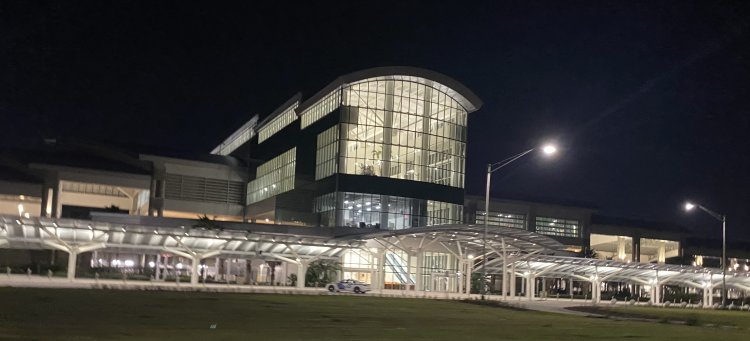
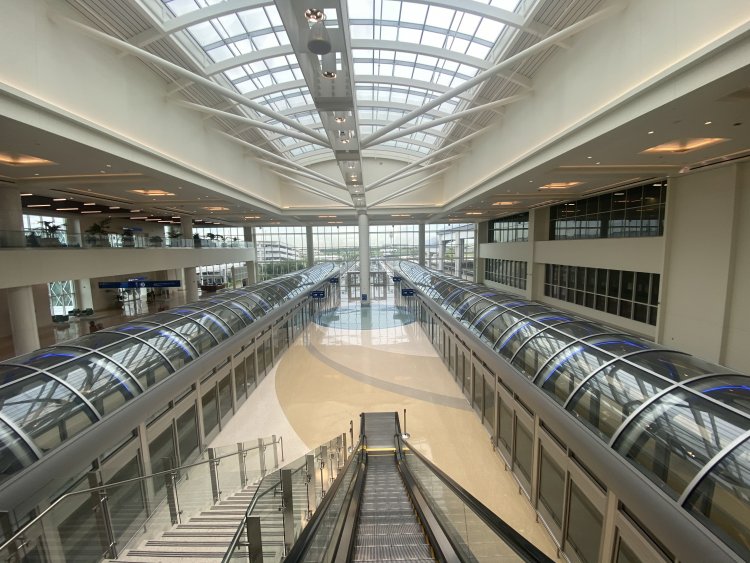
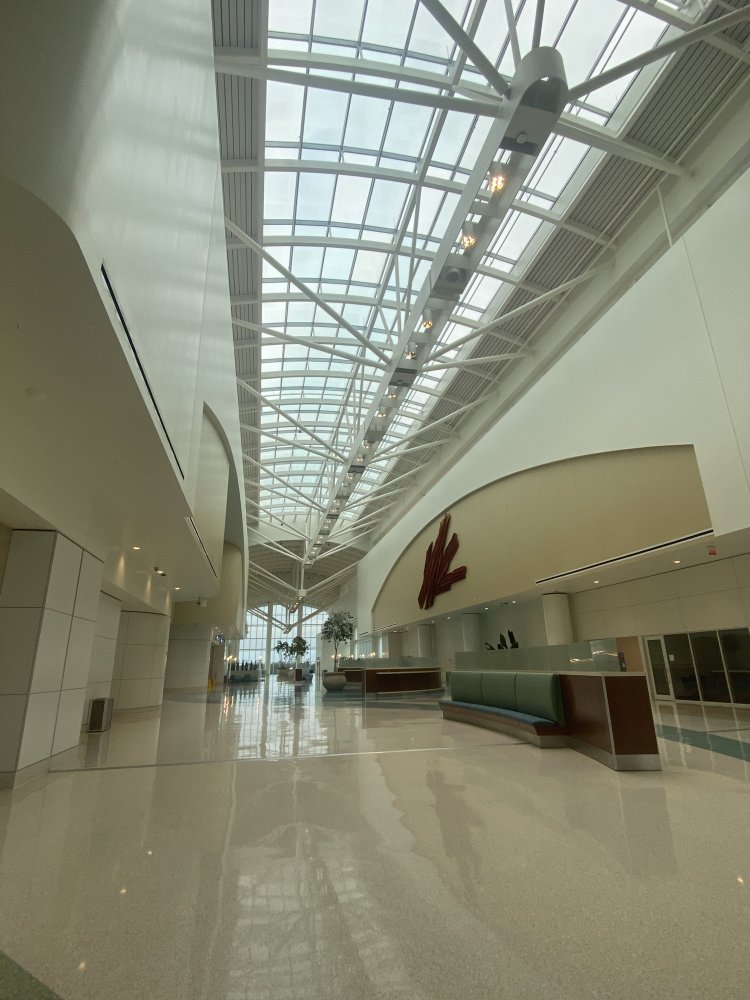

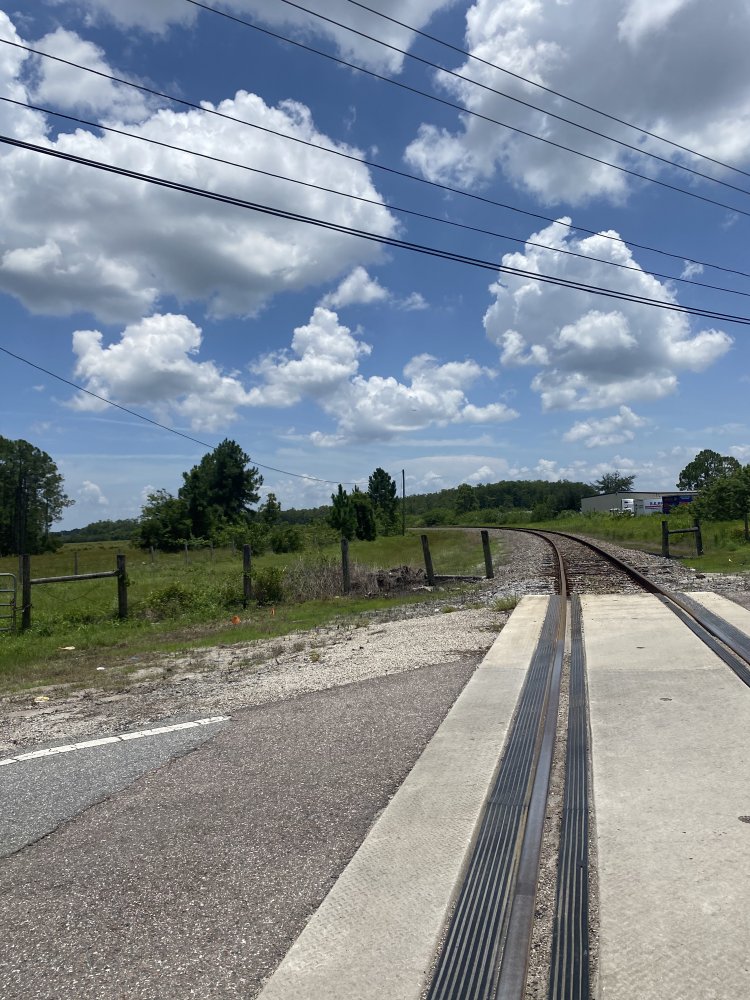
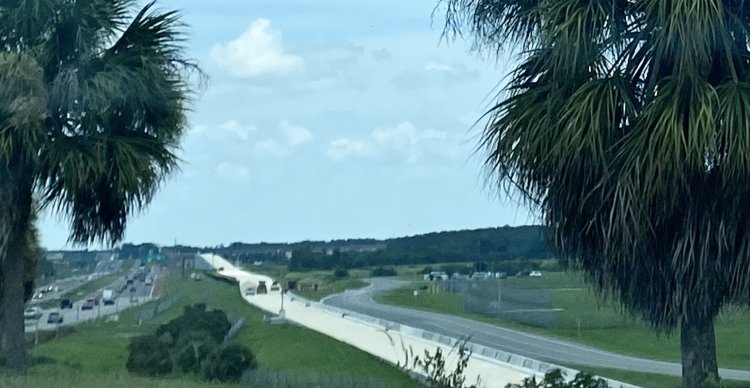
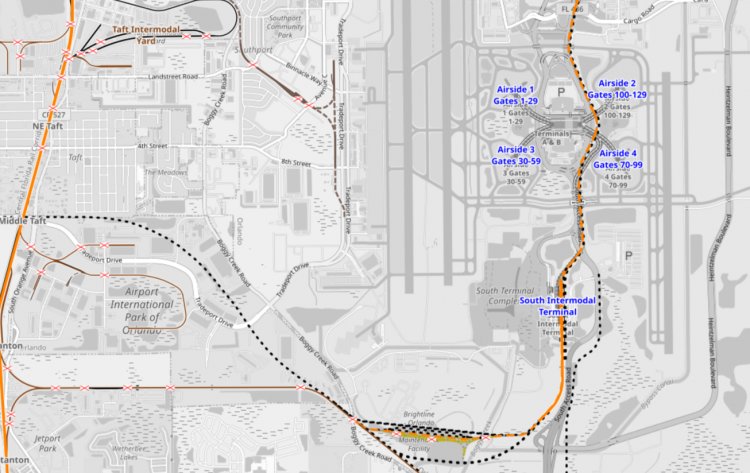
Pictured top to bottom: Intermodal at day, night; Orlando airport's new people mover tram; the top level of the intermodal; the intermodal's welcome sign; a segment of track to be set aside for Sunrail airport transit; the Beeline segment of the Brightline project now under way; a map of new tracks to be laid at Orlando international airport (credit: www.OpenRailwayMap.org).
MICA: I told you I was the primary sponsor for the interchange to build the new airport in 1980. That was for only 24 million passengers. Before the pandemic we had 50 million passengers. We'll go back to that. That's why we need a new terminal. The old airlines did not want that project done and they fought the intermodal and the expansion, which I promoted. About two million came from the state but most came from the passengers.
SWANSON-POLSTON: What started your interest in transportation and infrastructure?
MICA: I started off my career as a developer. I built things in Volusia and Orange. I have always loved seeing things come out of the ground, building something. Being Chairman of the Transportation committee, I was very proud of what we accomplished and are still accomplishing.
SWANSON-POLSTON: Thank you for taking the time out to discuss these exciting new projects. We're looking forward to another update in the future.
MICA: Great to be with you, Marshall.
The people of Central Florida previously elected Mica to 12 terms in Congress. Editor Marshall Swanson-Polston served on the Representative's Congressional staff from 2014-2015.

 Marshall S. Swanson
Marshall S. Swanson 










